Published
- 11 min read
Best OpenShift Alternatives in 2025 for Modern Cloud Teams
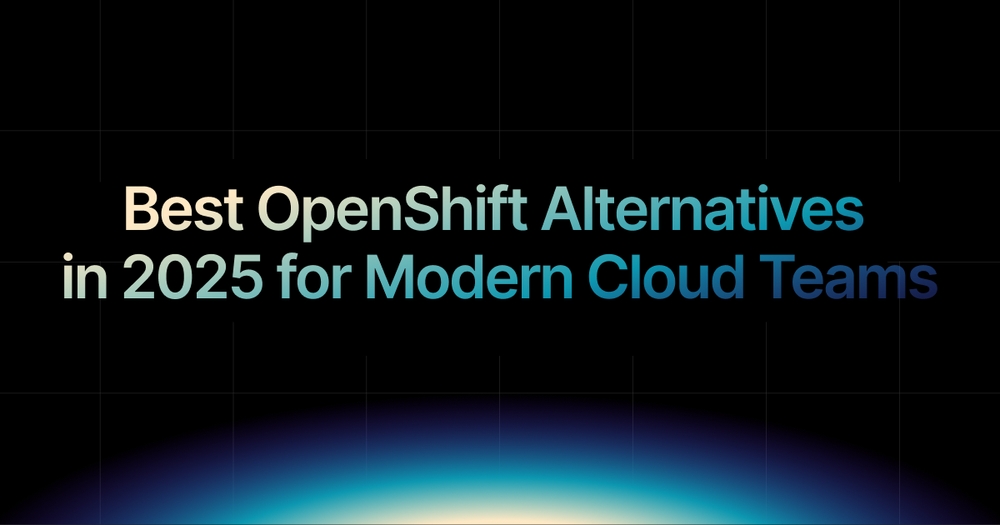
Introduction
Red Hat OpenShift has long been one of the most recognized Kubernetes-based platforms for container orchestration and enterprise DevOps automation. It provides a full suite for deploying, managing, and scaling containerized applications across hybrid and multi-cloud environments.
However, for many startups, small teams, and growing enterprises, OpenShift can be complex to set up and maintain. Licensing costs, infrastructure overhead, and a steep learning curve make it less ideal for teams seeking simplicity, faster deployments, and predictable pricing.
In 2025, developers are increasingly turning to modern, lightweight alternatives that provide the same scalability and automation without the operational friction. Among these, Kuberns stands out as an AI-powered deployment platform built on AWS, offering one-click deployments, automatic scaling, and up to 40 percent savings on infrastructure costs.
This guide explores the best OpenShift alternatives to consider in 2025 based on ease of use, scalability, and overall value.
What to Look for in an OpenShift Alternative
When evaluating alternatives, focus on the core aspects that influence efficiency and cost in modern DevOps workflows:
- Ease of Deployment: Look for platforms that offer one-click or Git-based deployment pipelines.
- Automation: Choose tools that handle scaling, monitoring, and maintenance automatically.
- Cost Transparency: Avoid platforms with complex pricing and hidden infrastructure costs.
- Integration Flexibility: The platform should integrate easily with GitHub, GitLab, and existing CI/CD pipelines.
- Scalability and Performance: Ensure consistent uptime, global coverage, and low-latency access.
Kuberns checks all these boxes, combining AWS-grade reliability with automation and transparent pricing designed for both startups and enterprises.
Top OpenShift Alternatives
Here are the top platforms that deliver OpenShift-level capabilities without the complexity, long setup times, or enterprise-grade pricing. Each option gives developers more freedom to deploy quickly, automate operations, and scale confidently without relying on heavy DevOps overhead.
1. Kuberns: The AI-Powered OpenShift Alternative
 Kuberns simplifies everything OpenShift does, but without the setup and operational overhead. Built on AWS, it provides an intelligent platform for full-stack deployments, from frontend apps to APIs and containerized workloads.
Kuberns simplifies everything OpenShift does, but without the setup and operational overhead. Built on AWS, it provides an intelligent platform for full-stack deployments, from frontend apps to APIs and containerized workloads.
Key Features of Kuberns
- One-click deployments directly from GitHub or GitLab.
- AI-driven scaling, monitoring, and alerting.
- Unified dashboard for logs, metrics, and performance.
- Zero DevOps setup, zero manual configuration.
- Save up to 40 percent on AWS costs.
Best For: Developers, startups, and teams looking for a simplified cloud deployment platform with automation and cost efficiency.
Learn more:
- What Is Kuberns: The Simplest Way to Build, Deploy, and Scale Full-Stack Apps
- Cut AWS Bills by 40 Percent Without Compromising on Security or Features
2. Rancher
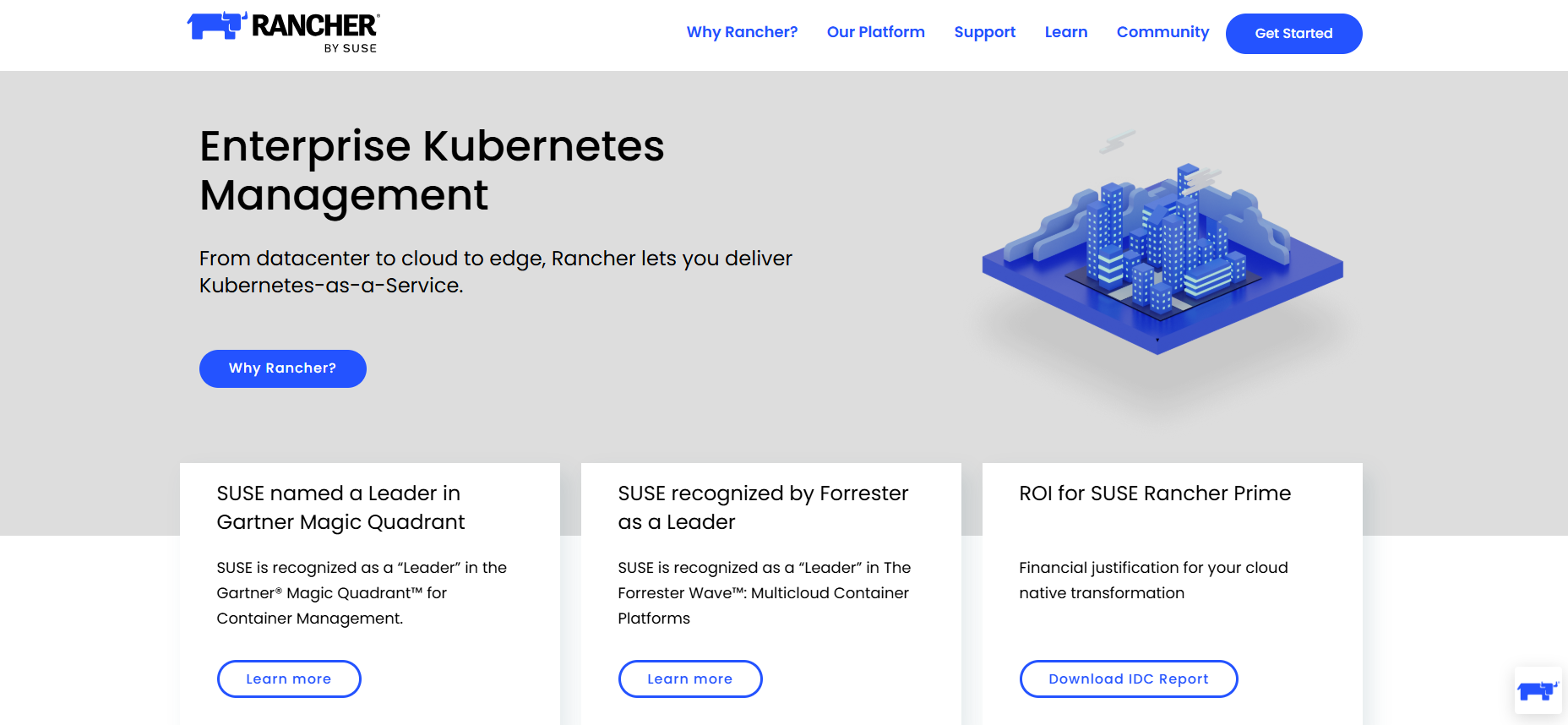 Rancher is a strong OpenShift alternative that simplifies Kubernetes cluster management. It provides a clean interface for provisioning, securing, and monitoring multiple clusters.
Rancher is a strong OpenShift alternative that simplifies Kubernetes cluster management. It provides a clean interface for provisioning, securing, and monitoring multiple clusters.
Best For: Enterprises and DevOps teams managing multi-cluster Kubernetes deployments.
Advantages:
- Centralized cluster control across on-prem and cloud environments.
- Role-based access control and policy management.
- Open-source with flexible integrations.
Limitations: Rancher still requires Kubernetes expertise, and setup can be time-consuming compared to automated platforms like Kuberns, which handle deployment and scaling automatically.
3. Platform.sh
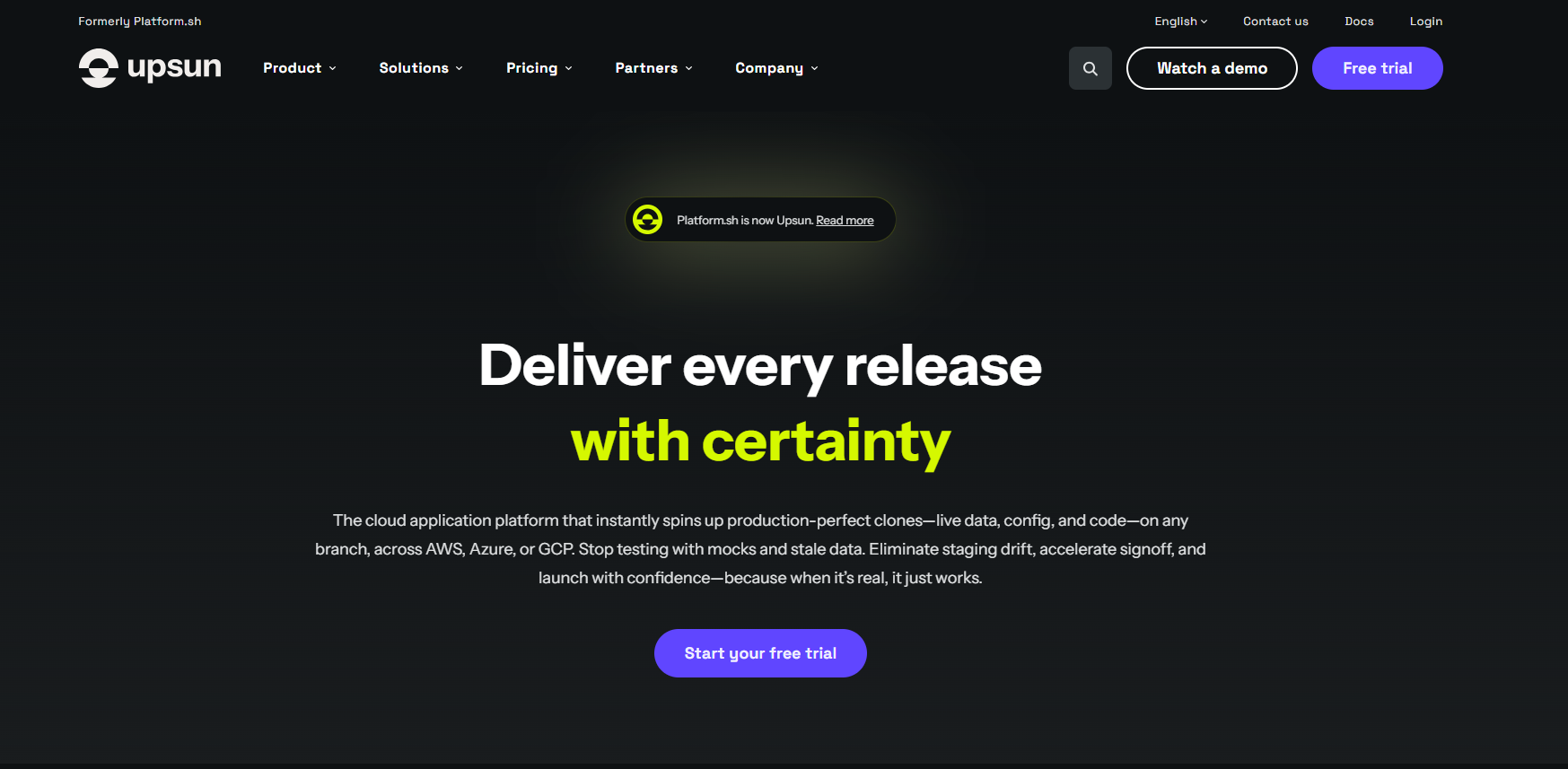 Platform.sh focuses on developers building and running web applications with integrated Git-based workflows. It automates infrastructure provisioning, scaling, and updates for modern applications.
Platform.sh focuses on developers building and running web applications with integrated Git-based workflows. It automates infrastructure provisioning, scaling, and updates for modern applications.
Best For: Teams running multi-environment web and API projects that value automation and Git-based deployments.
Advantages:
- Built-in CI/CD pipelines.
- Automatic staging environments per branch.
- Supports multiple frameworks and languages.
Limitations: Pricing can scale quickly for high-traffic apps, and it lacks the AI-driven optimization that Kuberns provides for performance and cost efficiency.
4. DigitalOcean App Platform
 DigitalOcean App Platform offers full-stack deployments with a focus on simplicity and affordability. It supports static sites, APIs, and Docker-based applications, making it a popular choice for small teams.
DigitalOcean App Platform offers full-stack deployments with a focus on simplicity and affordability. It supports static sites, APIs, and Docker-based applications, making it a popular choice for small teams.
Best For: Startups and small businesses that want predictable pricing and minimal setup.
Advantages:
- Flat-rate pricing and easy-to-use dashboard.
- Auto-deploys directly from GitHub.
- Supports scaling for moderate workloads.
Limitations: Limited automation and monitoring make it less suitable for large-scale production environments. Kuberns fills this gap with advanced observability, AI-based scaling, and real-time analytics.
Learn more:Best DigitalOcean Alternatives for Startups and Solo Developers.
5. Google Kubernetes Engine (GKE)
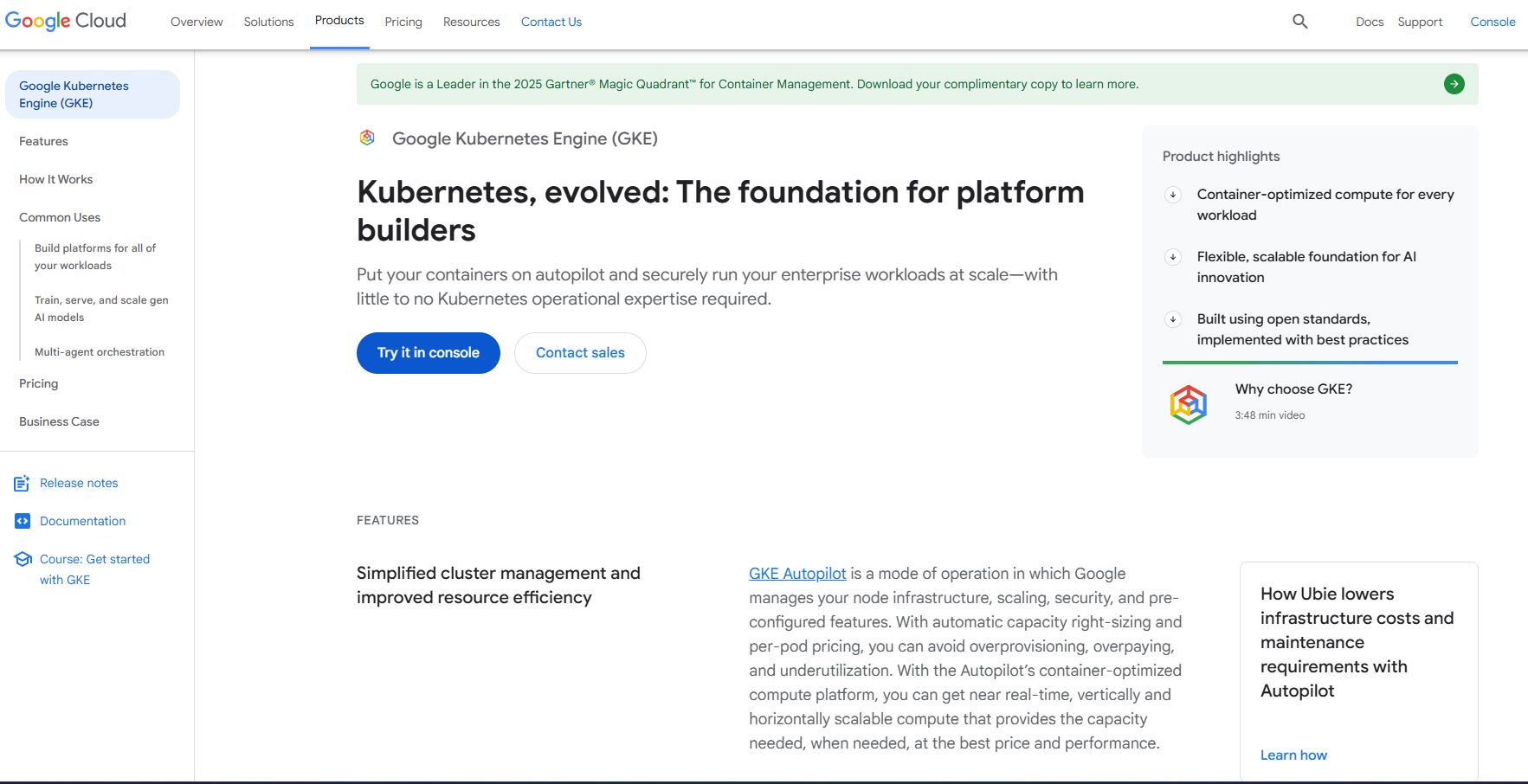 Google Kubernetes Engine (GKE) is a managed Kubernetes service that provides fine-grained control over containerized workloads. It is known for its reliability and strong integration with Google Cloud services.
Google Kubernetes Engine (GKE) is a managed Kubernetes service that provides fine-grained control over containerized workloads. It is known for its reliability and strong integration with Google Cloud services.
Best For: Enterprises and data-driven teams already using Google Cloud.
Advantages:
- High availability and automatic scaling.
- Deep integration with AI/ML and data tools.
- Excellent documentation and support ecosystem.
Limitations: While powerful, GKE can become expensive and complex to configure. Teams that want automation and simplicity often move to Kuberns for faster deployments and predictable pricing.
Read more:Google Cloud Alternatives.
6. Azure Kubernetes Service (AKS)
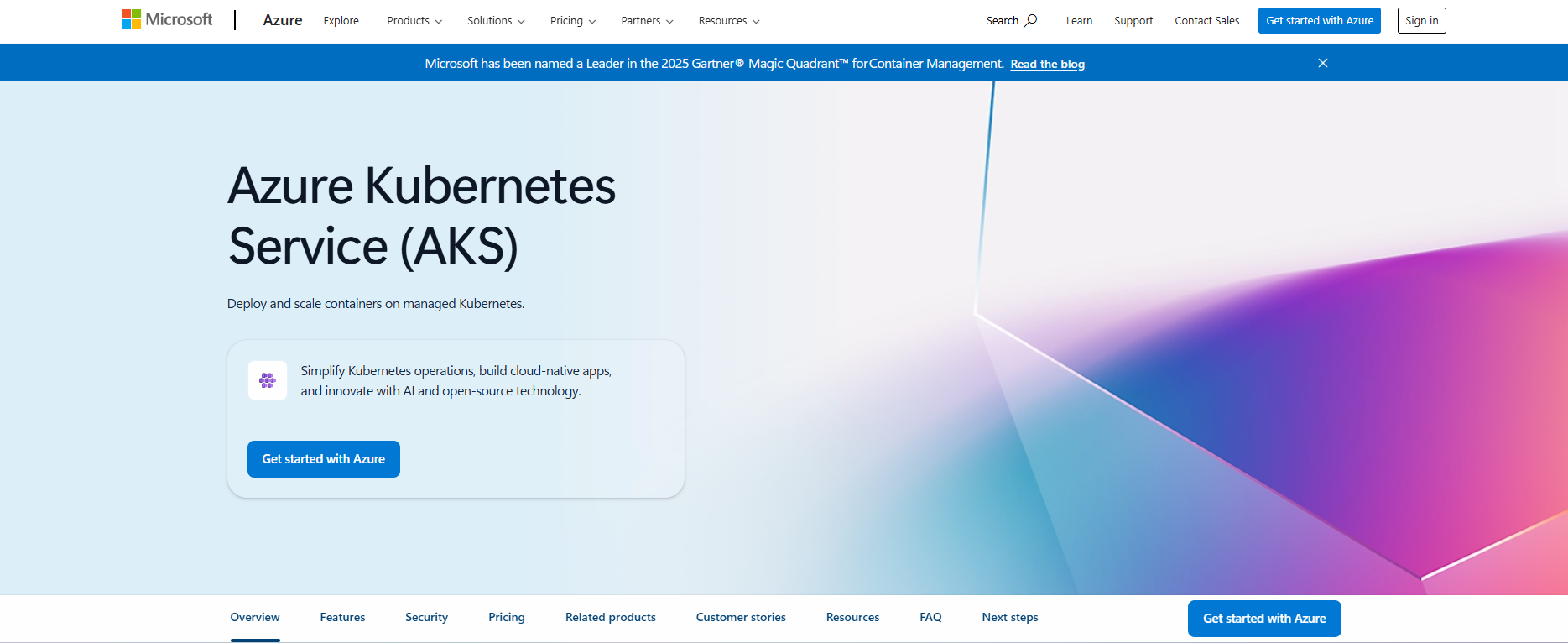 Azure Kubernetes Service (AKS) provides a managed Kubernetes environment for running containerized applications. It integrates seamlessly with Azure DevOps and Active Directory.
Azure Kubernetes Service (AKS) provides a managed Kubernetes environment for running containerized applications. It integrates seamlessly with Azure DevOps and Active Directory.
Best For: Organizations that already rely on Microsoft’s ecosystem.
Advantages:
- Deep integration with enterprise tools.
- Supports hybrid and on-prem environments.
- Scalable and compliant with major standards.
Limitations: Complex for smaller teams and requires manual configurations for scaling and monitoring. Kuberns simplifies this by providing automated scaling, unified monitoring, and AWS-backed reliability.
Read more:Azure Alternatives in 2025.
Comparison Table: Best OpenShift Alternatives
| Platform | Key Strengths | Best For | Limitations |
|---|---|---|---|
| Kuberns | AI-powered automation, unified monitoring, one-click Git deployment, up to 40% AWS savings | Teams needing AWS reliability and zero DevOps complexity | Focused on automation over granular manual configuration |
| Rancher | Centralized Kubernetes management, policy control, open source | Multi-cluster enterprise environments | Requires deep Kubernetes expertise |
| Platform.sh | Git-based workflows, automated staging, multi-language support | Web app and API teams | Pricing grows with usage |
| DigitalOcean App Platform | Simple UI, predictable billing, Docker support | Startups and small teams | Limited scaling and monitoring |
| GKE | Enterprise-grade reliability, data and AI integrations | Google Cloud users | Complex setup, higher costs |
| AKS | Microsoft integration, hybrid support, scalable | Azure-based enterprises | Manual configuration for scaling |
Why Kuberns Is the Right Choice
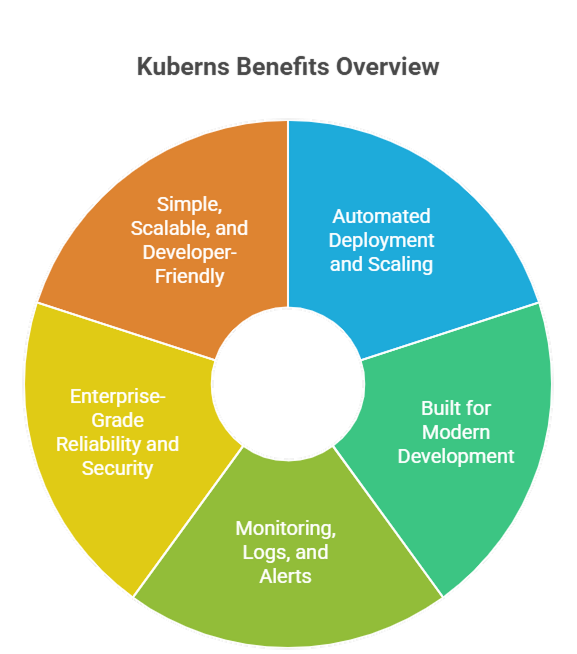 Kuberns offers a next-generation alternative to OpenShift by combining AWS infrastructure with automation, scalability, and intelligence. It removes the operational burden of managing clusters while keeping performance and cost efficiency at the forefront.
Kuberns offers a next-generation alternative to OpenShift by combining AWS infrastructure with automation, scalability, and intelligence. It removes the operational burden of managing clusters while keeping performance and cost efficiency at the forefront.
What makes Kuberns different:
- Built on AWS with enterprise-grade security and uptime.
- Full-stack support for APIs, web apps, and containerized workloads.
- Integrated monitoring, logs, and smart alerts in one dashboard.
- One-click deployment and scaling with zero setup.
- Up to 40 percent AWS cost savings.
If your team wants OpenShift-level capability without the complexity, Kuberns gives you all the power with none of the overhead.
Final Thoughts
OpenShift remains a strong solution for enterprise Kubernetes management, but modern teams need faster, simpler, and more affordable ways to deploy applications.
Kuberns brings that simplicity to the forefront. With built-in automation, real-time monitoring, and significant cost efficiency, it allows teams to focus on building instead of managing infrastructure.
👉 Deploy your first app on Kuberns today and experience AI-powered cloud management that scales as fast as your business.

Frequently Asked Questions (FAQ’s)
1. What is OpenShift used for?
OpenShift is a container orchestration platform built on Kubernetes. It helps developers build, deploy, and manage applications across hybrid or multi-cloud environments using containerized infrastructure.
2. Why do companies look for OpenShift alternatives?
Companies seek OpenShift alternatives when they want simpler setup, lower licensing costs, and easier automation. Many teams also prefer platforms with built-in monitoring and transparent pricing, such as Kuberns.
3. What is the best OpenShift alternative in 2025?
Kuberns is one of the best OpenShift alternatives in 2025. It provides AWS-backed reliability, one-click deployments, AI-powered scaling, and up to 40 percent cost savings with no DevOps overhead.
4. How does Kuberns compare to OpenShift?
Kuberns removes the complexity of OpenShift by automating infrastructure setup, scaling, and monitoring. It delivers the same reliability through AWS but with simpler workflows and zero manual configuration.
5. Is OpenShift still relevant in 2025?
Yes, OpenShift remains a powerful enterprise solution for container management, but smaller teams and startups often prefer lightweight, automated platforms like Kuberns that reduce cost and complexity.
6. Which OpenShift alternatives support hybrid or multi-cloud deployments?
Platforms such as Rancher, Azure Kubernetes Service (AKS), and Google Kubernetes Engine (GKE) support hybrid and multi-cloud workloads. Kuberns, while optimized for AWS, focuses on automation and reliability for full-stack applications.
7. What are the main drawbacks of OpenShift?
The main drawbacks include complex configuration, higher maintenance effort, and costly enterprise licensing. Many teams now prefer managed solutions that handle scaling and monitoring automatically.
8. Can Kuberns host containerized applications like OpenShift?
Yes. Kuberns supports containerized workloads alongside frontend and backend deployments. Developers can push code directly from GitHub or GitLab and deploy full-stack applications instantly.
9. Does Kuberns work with existing AWS infrastructure?
Yes. Kuberns runs on AWS infrastructure, allowing teams to enjoy AWS-level reliability, security, and scalability while saving up to 40 percent on cloud costs.
10. Is migrating from OpenShift to Kuberns easy?
Migrating from OpenShift to Kuberns is straightforward. Teams can containerize their apps, connect their Git repository, and deploy in one click. The platform automatically manages provisioning, scaling, and monitoring.